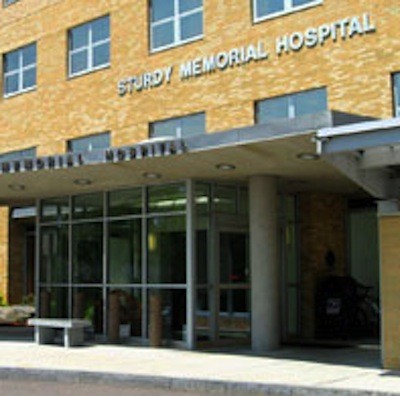MA Hospitals Report Card: A to F
Monday, October 28, 2013

Among the five other Central Mass. hospitals that responded to the voluntary survey, two get a “B” grade: Henry Heywood Memorial Hospital in Gardner; andSaint Vincent Hospital in Worcester. And three get a “C” grade: HealthAlliance Hospital in Leominster; UMass Memorial Medical Center – Belmont Street campus; and UMass Memorial – Lake Avenue campus . HealthAlliance is affiliated with UMass Memorial.
These Hospital Safety Scores are based on surveys submitted by hospitals across the U.S. that have demonstrated “a commitment to transparency” by participating in the voluntary Hospital Survey. The annual survey is conducted by The Leapfrog Group, a national not-for-profit organization that is driven by the nation’s largest employers and purchasers of health-care benefits “to initiate breakthrough improvements in the safety, quality and affordability of health care for Americans.”
Leapfrog’s survey assesses hospitals on three key areas: how patients fare; resources used in caring for patients; and leadership and structures that promote patient safety. The aim of the survey, according to Leapfrog, “is to mobilize employer purchasing power to alert America’s health industry that big leaps in health-care safety, quality and customer value will be recognized and rewarded.”
The Mass. Hospital Association has yet to respond to GoLocalWorcester’s request for interview. And the Mass. Medical Society declines to comment, with spokesman Richard Gulla stating, “We’re just not prepared to answer these kinds of questions, as we’re not familiar with the Leapfrog methodology and wouldn’t be able to get well informed enough about it to comment by your deadline.”
Commitment to transparency
Founded in 2000 by a small group of large employers, Leapfrog was initially supported by the Business Roundtable and is now independently supported by its purchaser members. The organization’s growing consortium of Fortune 500 companies and other large private and public health-care purchasers provides health benefits to more than 37 million Americans in all 50 states.
Annually, Leapfrog members and their employees spend tens of billions of dollars on health care. These members have agreed to base their purchase of health care on principles that “encourage provider-quality improvement and consumer involvement.”
In 2001, Leapfrog launched its Hospital Survey, to encourage hospitals to publicly report their progress in meeting three key safety practices that had been identified as having “the potential to save a substantial number of patient lives.” Since then, the Hospital Survey has evolved, according to Leapfrog, “into a well-balanced survey of hospital quality and safety, focusing on hospital structures, processes of care, and outcomes.”
Leapfrog’s composite patient-safety score for U.S. hospitals is the subject of a peer-reviewed study, published earlier this year in the Journal of Patient Safety. The members of the Safety Score Expert Panel, which included physicians from Harvard, Johns Hopkins and Stanford universities, concluded that the Leapfrog composite score “provides a standardized method to evaluate patient safety in general acute-care hospitals in the United States.”
While constrained by available data and publicly reported scores on patient-safety measures, the study notes, Leapfrog’s composite score “reflects the best available evidence regarding a hospital’s efforts and outcomes in patient safety.” While additional analyses are needed, the study adds, the score “did not appear to have a strong bias against hospitals with specific characteristics. The composite score will continue to be refined over time as measures of patient safety evolve.”
Despite the hundreds of thousands of patients who suffer preventable harm each year in America’s hospitals, the peer-reviewed study states, patients, health-care providers, and health-care purchasers “lack a standardized method to evaluate patient safety in U.S. hospitals. This lack of standardized evaluation is especially concerning given recent evidence that many U.S. hospitals have made small incremental improvements in safety or continue to harm patients in large numbers.”
While the number of publicly reported patient-safety measures has grown over the last decade, the study states, “there is little evidence that patients and providers are using these data to inform their choice of
hospital.” One possible explanation for the lack of use, according to the study is that safety data “have typically been reported on a measure-by measure basis, requiring patients and providers to synthesize many disparate data points in their decision-making process.”
Startling statistics

These startling statistics come from Steering Employees Toward Safer Care, a 2012 report by Altarum Institute, a non-profit health-research organization. “The most appalling aspect of these errors, which include hospital-acquired infections, medication errors, and procedural mistakes,” the report states, “is that virtually all of them are avoidable through the implementation of known, low-cost best practices and evidence-based clinical guidelines.”
One staggering figure from the Altarum report is this: One in three hospital admissions includes an “adverse” event. Another frightening statistic: At the best-performing hospitals, nearly 5 percent of patients having inpatient surgery will die of “avoidable” complications. “At the worst hospitals, almost four times as many will die.” Yet patients cannot successfully guess which hospitals are safer, the report finds, because having a well-known facility with a strong public reputation “does not guarantee better results.”
Hospital safety varies dramatically within and across hospital systems, the report states. For example, rates of patient falls range from one to seven per 1,000 inpatient days. Rates of often-fatal central-line infections are as high as 4 percent in some facilities, despite the fact that they have been almost completely eliminated by 142 U.S. hospitals.
Knowing which hospital is safest, requires easily accessible data about specific metrics, collected on a regular basis. “Unfortunately,” Altarum finds, “many hospitals still do not release safety information. “
By far the most powerful determinants of hospital-safety practices are the priority that hospital leaders place on safe outcomes and the systems and policies put in place to achieve them. Revenue, or threats to revenue, is one motivator that influences adoption of safe practices. Using that motivation, in recent years, Medicare officials have begun to encourage safer practices by limiting or denying payments for treatments of hospital-acquired injury or illness. In essence, these payment rules place appropriate financial consequences on hospitals when errors occur.
Furthermore, beginning in 2014, the federal Centers for Medicare & Medicaid Services plans to adjust Medicare payments based on hospitals’ ability to report specific safety outcomes. “By contrast,” Altarum reports, “employers whose health-insurance benefits cover more than 60 percent of non-elderly Americans, have not exerted similar pressure on hospitals that admit their employees. In many regions of the country, employees remain unaware of differences in safety among hospitals in their communities and lack information about how to find out.”
In cases where hospital mistakes are not fatal, hospital errors lead to lengthened stays, extended absences, and lost productivity, Altarum continues. “Because hospital errors are the third-leading cause of death for all Americans and certainly the most avoidable, employers have a clear imperative to save lives while reducing costs. … “
Did you need what you got?
One key critic of the Leapfrog Hospital Safety Scores is Boston University’s Alan Sager, who is both professor of health policy and management and director of the Health Reform Program. He points to the annual project’s disclaimer, which he summarizes as, “We put this [composite score] out here with big bar charts and [grades] of A, B, C, D and E, but we don’t stand by it.”
Among other things, the Leapfrog disclaimer states, “The information on this site is derived from hospitals’ voluntary submissions of the Leapfrog Hospital Survey. This data is derived from third parties, and accordingly Leapfrog disclaims any and all warranties with respect to this data and the Survey.”
Sager also questions the published peer review of Leapfrog’s composite patient-safety scores. The conclusion of the peer review is that “the scores make sense,” he says. “As concepts, these are good measure of quality or safety. But that doesn’t mean that the information was accurately compiled and reported.”
There’s evidence, Sager says, that “hospital nurses spend more time documenting than they do at bedside. So if they’re busy documenting all this stuff and they know that’s taking time from patient care, are they going to have the time to accurately record [bedside] information? Also, will the hospitals be able to summarize the information accurately?”
Sager knows of no other hospital report cards that both use valid and legitimate data and are also consumer-friendly. “First of all, what information can you use?” he says. “We know, for example, that even when major corporate employers, employing thousands of people, try to buy health insurance by price and quality, they ended up buying overwhelmingly by price because they didn’t have good quality measures.
“So how are individual patients - with the time, information, knowledge and processing constraints that we have, because we also have lives to live – [able to] identify and compare hospitals?” Sager continues..” I don’t think there’s [yet] a good way for a reasonable and conscientious person to use the available information, to make good decisions with confidence.”
Sager’s concern is over more than just quality and safety of hospital care. “It’s not [only] whether the [hospital care] was done safely and competently, but did you need it?” he says. “Did you get what you needed? And did you need what you got? We don’t have anything on that. Nobody has that information.”
When hospitals tell us to shop for medical care using price and quality as our criteria, Sager says, “they’re really telling us to go play in traffic. And that’s not nice.’
Sager calls for a “more reliable and trustworthy assurances that we’re getting the right care – and we’re not getting the wrong care.” The “only way” that can be done, he adds, “is to have physicians who are financially neutral, so they’re not tempted to use this [medical treatment] versus that [one], when this [one] costs three times as much – or to surgery, surgery or [medication] that [patients] don’t need.”
In the meantime, many Americans will continue to rely on Leapfrog Hospital Survey – and others like it – to decide which hospitals will give them the most – and least – safe levels of medical care.
Steven Jones-D'Agostino is chief pilot of Best Rate of Climb: Marketing, Public Relations, Social Media and Radio Production. He also produces and hosts The Business Beat on 90.5 WICN, Jazz Plus for New England. Follow him on Twitter @SteveRDAgostino.
Related Slideshow: Check Out The Grades: Massachusetts Hospitals Report Card
A recent survey released by The Leapfrog Group assigns a Hospital Safety Score, using the report card system of A to F to each of the hospitals in Rhode Island. These grades are based on expert analysis of injuries, infections and errors that cause harm or death during a hospital stay.
Let's see how each of Massachusetts' hospitals were graded from highest to lowest:
Related Articles
- New England’s Best Hospitals Rated By Patients
- CHART: New England’s Best Hospitals Rated By Patients
- How Central Mass Hospitals Ranked: NE’s Best Hospitals Rated By Patients
- Local Nurses Say Hospitals “Skirting the Law”
- Central Massachusetts Hospitals Named Safest For Surgery in State

















































































































































Follow us on Pinterest Google + Facebook Twitter See It Read It